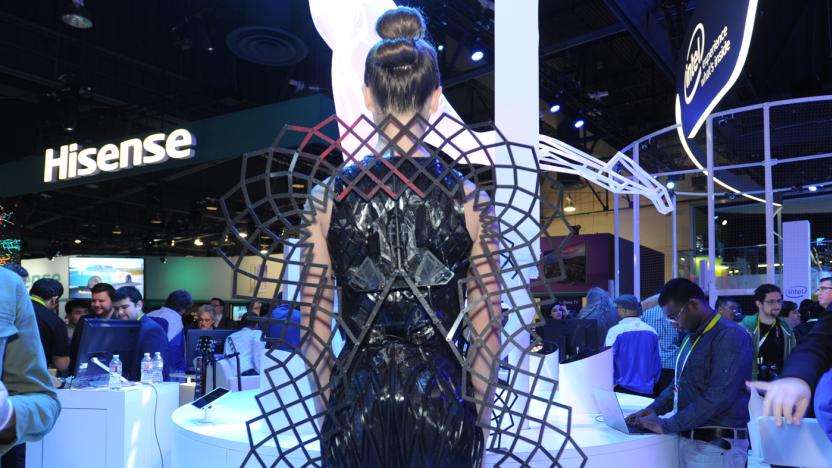intelcurie
Latest

Intel wearables show models' stress levels on Paris runway
Intel's continuing experiment with wearables is getting serious. The company teamed up with British designer Hussein Chalayan to create smart glasses and belts for five models in Chalayan's Spring/Summer 2017 show today. The devices are powered by Intel's Curie module for wearables, though neither company has expressed plans for actually making these accessories widely available.

A smart toothbrush just won Intel's maker-themed reality show
Last month, Intel the tried to make inventors cool. The company brought tinkering into prime time with the debut of America's Greatest Makers, a reality TV competition on TBS where 24 teams of inventors have been competing for a $1 million prize. Intel's involvement means two things. For starters, CEO Brian Krzanich is one of the main panelists. Also, to even qualify for the competition, all of these projects had to incorporate Intel's button-sized Curie module, which was designed to power the coming wave of connected objects.

The internet of ratings: How makers became hip enough for reality TV
Technology wasn't always hip, and neither was Intel. The company, known for most of its 48-year history as the leader in PC chips, has in recent years branched out into more cutting-edge areas. That includes mobile, drones, robots and an assortment of wearables running the gamut from a high-tech paintball helmet to an augmented-reality hard hat. Now, in a sign of the times, Intel is joining forces with Mark Burnett, the man behind Survivor, Celebrity Apprentice and The Voice, to bring you a reality show about inventors. America's Greatest Makers, which premieres April 5th on TBS, follows 24 teams competing for a $1 million prize. Though the show follows a format similar to other reality contests, complete with auditions (pitches), guest judges and elimination rounds, the panelists are generally friendlier. Think: the NBA's Kenny Smith and celebrity dealmaker Carol Roth, not a Simon Cowell or Gordon Ramsay.

Inside Lady Gaga's high-tech Grammy performance
When Lady Gaga started singing "Space Oddity" at the Grammys on Monday night, virtual drops of red paint dripped down her face to form a lightning bolt. The image -- a meticulously planned facial projection -- instantly evoked David Bowie's face on the cover of Aladdin Sane. For the six-minute tribute to the legend who passed away a little over a month ago, Gaga employed an assortment of cutting-edge tools to create a kaleidoscopic visual treat.

Intel's conceptual Adrenaline Dress gets upset when you do
Intel tapped Chromat to make its weird and wonderful Adrenaline Dress. Packing Intel's Curie computing module, the garment senses differences in adrenaline, based on your skin conductivity. A network of elaborate 3D-printed panels and a carbon-fiber skeleton then expands outwards, like a mutant porcupine had wings. Interestingly, there's no airpump or servos: it uses alloys that expand and contract to heat that are responsible for the movement. It's another design concept, but this one means to showcase its Curie module, while 2014's spider nightmare focused on RealSense. Curie is a more realistic proposition when it comes to smart garments -- because it's, well, tiny. Photos by Will Lipman.

Intel Curie opens vents in Chromat's sports bra to keep you cool
Experimental clothing studio Chromat unveiled its Spring/Summer 2016 collection over the weekend, and it includes a 3D-printed dress that expands as your adrenaline rises, plus a cool new sports bra. That's literally cool. Both garments are powered by Intel Curie, a tiny, low-power base for responsive consumer and industrial wearables.




